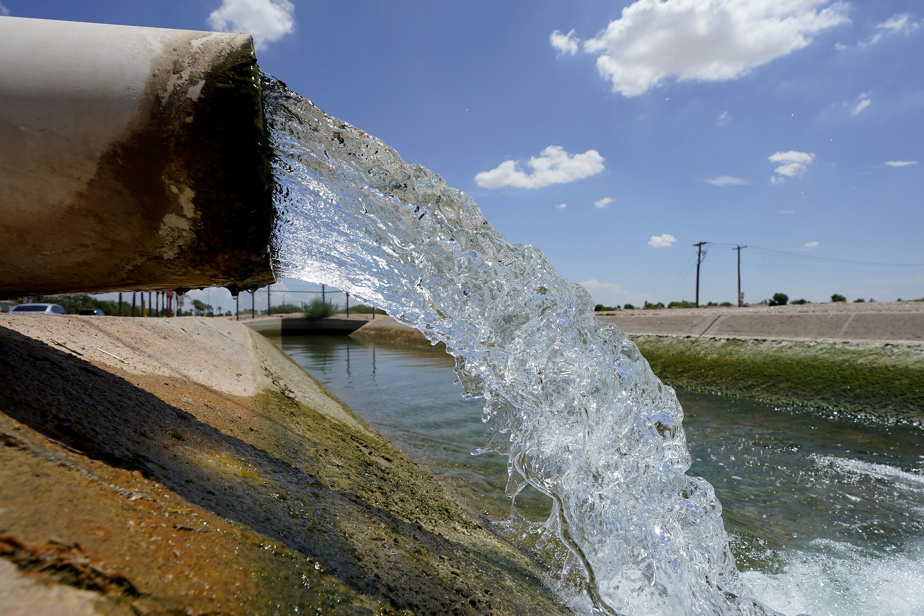(LOS ANGELES) The Biden administration said on Tuesday it was considering sweeping restrictions on the use of the waters of the shrinking Colorado River after talks between several US states stalled.
Nearly a quarter century of drought, compounded by climate change and an increase in water needs, has reduced the once rushing river to worrying levels.
So much so that the reservoirs and hydroelectric dams along its course are threatened.
The river supplies some 40 million people with water from the Rocky Mountains to the Gulf of California, Mexico, and irrigates millions of acres of arable land to feed America.
Despite numerous deadlines, seven US states are at an impasse to agree on their consumption levels. The goal: to prevent reaching the critical point, when the supply pipes of the gigantic Hoover dam will be above the water level and the river will stop flowing.
The federal agency responsible for managing water resources said Tuesday it could impose mandatory cuts. The consumption of users downstream of Lake Mead (California, Nevada, and Arizona) would thus be restricted in the same way.
Such a decision would upset the system that has regulated the allocation of water from the river for more than a century on the basis of a criterion of seniority, which favors California farmers.
“Everyone understands the magnitude of the crisis,” said Tommy Beaudreau, Deputy Secretary of the Interior – who in the United States is in charge of managing federal lands – according to the Los Angeles Times.
This official pointed out that the heavier than normal precipitation in the American West this winter represented a boon for the river and would relieve some pressure, without being a permanent solution.
Despite the downpour, “nobody is safe,” he said, calling for “unity” to solve the problem.
The federal agency’s proposal puts forward two other options for the river: restrict consumption by respecting the age criterion, or… do nothing.
The first solution would allow farmers in California to be virtually exempt from any restrictions. Users arriving later on the water supply network would pay a higher price.
Nevada and Arizona, two southwestern states, would be particularly hard hit. The Arizona metropolis of Phoenix would receive almost no drinking water.
“We wouldn’t let that happen,” Tommy Beaudreau told The New York Times.
But overriding existing river regulations, imposing percentage cuts on all users, could lead to lawsuits from California farmers. For decades, they have used the waters of the river to transform a near-desert landscape into one of America’s orchards.
Attached to the Hoover Dam, Lake Mead reached its lowest level since 1937 last summer, to the point that a metal drum containing the body of a person killed in the 1980s was discovered on the dried up shore.
According to a study published in 2020 by the United States Geological Survey (USGS), the flow of the Colorado has dropped by an average of 20% over the past century, and at least half of this drop can be attributed to rising temperatures in the area.
Last year, federal authorities urged seven western states to agree to reduce their consumption to a maximum of 40% of the river’s flow.
Six states had proposed that the majority of those restrictions be imposed on California, which did not agree to the plan and later released a counter-proposal, suggesting the cuts come mostly from upstream.

